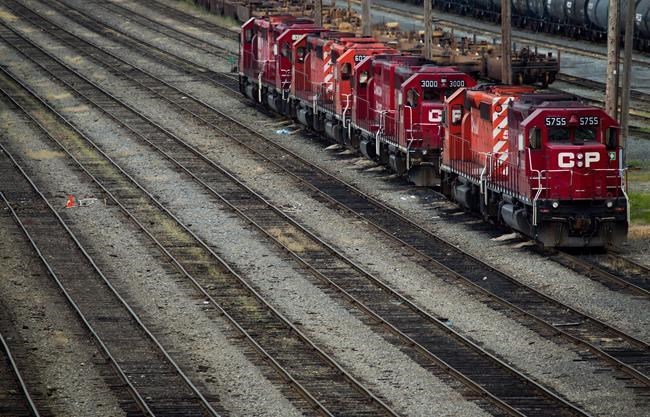CALGARY — The merger of Canadian Pacific Railway Ltd. and Kansas City Southern promises improved service for Canadian shippers, but the impact on crude-by-rail volumes will be muted, observers said Monday.
The US$25-billion takeover deal announced Sunday would link the Canadian and northern U.S. rail networks of Canadian Pacific with the southern U.S. and Mexican routes of KCS, with the only significant overlap at Kansas City, Mo., where the railways share a rail yard.
In a tweet on Sunday, Alberta Premier Jason Kenney said the deal was a win for crude oil export capacity from Western Canada following the cancellation of the Keystone XL pipeline project, but a longtime crude-by-rail exporter says he doesn't expect it will make much difference.
"Most of the oil moved to market out of Western Canada goes by Canadian National rather than Canadian Pacific," said John Zahary, CEO of Calgary-based Altex Energy Ltd., which moves about 40,000 barrels per day of oil mainly through its Lashburn, Sask., rail terminal, which is on a CN rail line.
"The CN main line goes through Edmonton while the CP main line goes through Calgary – and most of the oil production in Western Canada is in the northern part of the provinces."
He added the current system where railcars are shifted from one railway to another to reach their destination works well, but there will probably be efficiencies for shippers with access to CP in being able to use one railroad to get crude oil from Western Canada to the U.S. refining complex on the Gulf Coast.
Canadian crude-by-rail export numbers have been volatile in the past year, with shipments rising to a record 412,000 bpd in February 2020, then falling to an eight-year low of 39,000 bpd last July. In December, shipments averaged 190,000 bpd.
The corporate tie-up to create a new railroad called Canadian Pacific Kansas City (CPKC) will result in customer diversification in terms of both business lines and geography, RBC analyst Walter Spracklin wrote in a report.
"Notable is the level of merchandise exposure KSU brings to CP, which represents about 70 per cent of KSU’s revenue but only 36 per cent for CP," he wrote.
"The combined entity would have merchandise at 46 per cent of the mix ... Similarly, the geographic mix of adding the U.S. and Mexican revenue streams of KSU to CP makes for, in our view, a better geographic mix by reducing CP’s Canada exposure from 76 to 53 per cent and increasing materially its exposure to the U.S. (from 24 to 33 per cent) and Mexico (from zero to 14 per cent)."
Analyst Jason Seidl of Cowan Equity Research said in an interview he thinks the deal will benefit crude-by-rail shipments, but the larger benefit for Canadian shippers will be the general improvement in service and route options to the southern states and Mexico.
"The combination should create customer growth in North America, efficiencies in new single-line routes, increase market reach and notable synergies," he said.
Shares in CP Rail fell on the Toronto Stock Exchange while Kansas City Southern shares rose on the New York Stock Exchange on Monday.
CP Rail slid by as much as 4.9 per cent or $23.26 to $451.01, while KCS rose by as much as 16 per cent or US$36.13 to US$260.29
Under the deal, shares of Kansas City Southern are to be valued at US$275 per share, representing a 23 per cent premium over closing prices Friday, the companies said in a joint news release.
KCS shareholders will receive 0.489 of a CP share and US$90 in cash for each KCS common share held. The resulting company will be 75 per cent owned by CP Rail shareholders.
The merger must be approved by the Surface Transportation Board, a U.S. federal regulatory agency, to proceed, executives said. They said it doesn’t require regulatory approvals in Canada or Mexico.
The companies estimate the merger will result in US$800 million in annual revenue growth within three years after U.S. regulatory approval is received, expected in mid-2022.
They also expect to realize US$180 million in annual cost savings from fuel efficiency, administration, equipment rents, facilities, information technology and licensing, but don't anticipate any net reductions in workforce.
The global headquarters for the merged firm is to remain in Calgary while Kansas City will house its U.S. headquarters.
The combined company is to operate more than 32,100 kilometres of rail in Canada, the U.S. and Mexico, employ about 20,000 workers and generate total revenue of about US$8.7 billion based on 2020 figures.
This report by The Canadian Press was first published March 22, 2021.
Companies in this story: (TSX:CP, TSX:CNR)
Dan Healing, The Canadian Press



